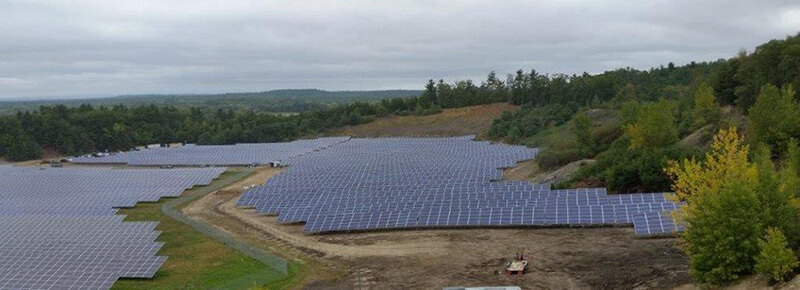The Future of Community Solar
November 2, 2018

The consensus is clear – solar power has proven itself to be a viable form of renewable energy. But while most people think of giant solar farms or roof-mounted solar panels when they think of solar, a new paradigm has emerged to take advantage of this emerging technology: community solar.
Community solar, also known as shared solar, refers to a solar installation project to which community members can subscribe and receive a discount on their electric bill, based on the energy produced by the installation. In the last few years, community solar has become a growing segment of solar in the United States.
From humble beginnings – namely, a 36 kW system built in Ellensburg, Washington, in 2006 – community solar has spread to 42 states plus the District of Columbia, representing 1,023 megawatts of installed capacity. According to the Smart Electric Power Alliance (SEPA), between 2016 and 2017, community solar demonstrated 112% growth, compared to the 68% average annual growth of the broader solar market in the last decade.
More Room to Grow
While it’s clear that community solar has grown exponentially, studies say there’s much more room to grow. Research from the Coalition for community solar Access posits that community solar could provide 57 to 84 gigawatts by 2030 – an increase of up to 80 times what’s being produced today.
To put that into perspective, a single megawatt (MW) of solar can power 164 homes. Three gigawatts, the amount of community solar the Solar Energy Industry Association estimates will be added in the next few years, could power around 500,000 homes.
Even with 42 states participating in community solar, SEPA estimates that 90% of utility service areas don’t currently have access. But they want it: A study SEPA did with the Shelton Group in 2016 suggested the total potential for the community solar market was 6.5 million households. With fewer than 300,000 households currently subscribed, there’s a huge market for more community solar – if the current challenges can be solved.
State Support Is Essential
The community solar Vision Study projects that increasing the community solar market to 50+ GW by 2030 will require $100 billion in capital investment. Where and how facilities will be developed depends, to a certain degree, on state policies that encourage community solar programs. Supportive state policies are particularly important to third-party developers, who’ve become a larger and larger part of the community solar landscape, and are now responsible for about 67% of the total installed capacity.
SEPA’s 2018 community solar Design Models report shows that many of the states with community solar policies have drawn large third-party developments, and that the majority of third-party capacity is concentrated in three states that offer significant financial incentives to community solar subscribers: Colorado, Minnesota, and Massachusetts.
State legislation that encourages community solar programs will be crucial to continuing to grow capacity, and nonprofit groups like Vote Solar want to make sure that low- and moderate-income communities are a significant focus of these policies. Since these households often lack access to traditional solar, they’re uniquely benefited by community solar programs.
Encouraging Low-Income Participation
Challenges remain, however, in ensuring low-income community participation in programs. States have taken various approaches to encourage low-income participation, including carveouts, incentives, and other programs. 44% of community solar programs have some level of low- and moderate-income subscribers, though programs often have to include subsidies and external funding to keep solar energy – still a premium-priced product in many areas – affordable for these subscribers.
Despite the upside of state policies, navigating these complex policies from state-to-state is still a challenge for third-party operators, according to SEPA. Other challenges include customer acquisition, finding vendors and sites, marketing, and educating subscribers and potential subscribers.
The Future Looks Bright
Even with all of these hurdles, the industry is working hard to meet demand and provide more access to clean, renewable solar power – a boon for the environment and for consumers. CR Community is dedicated to bringing the benefits of 100% renewable solar energy to communities across the country – because we believe that the future of solar looks bright.

